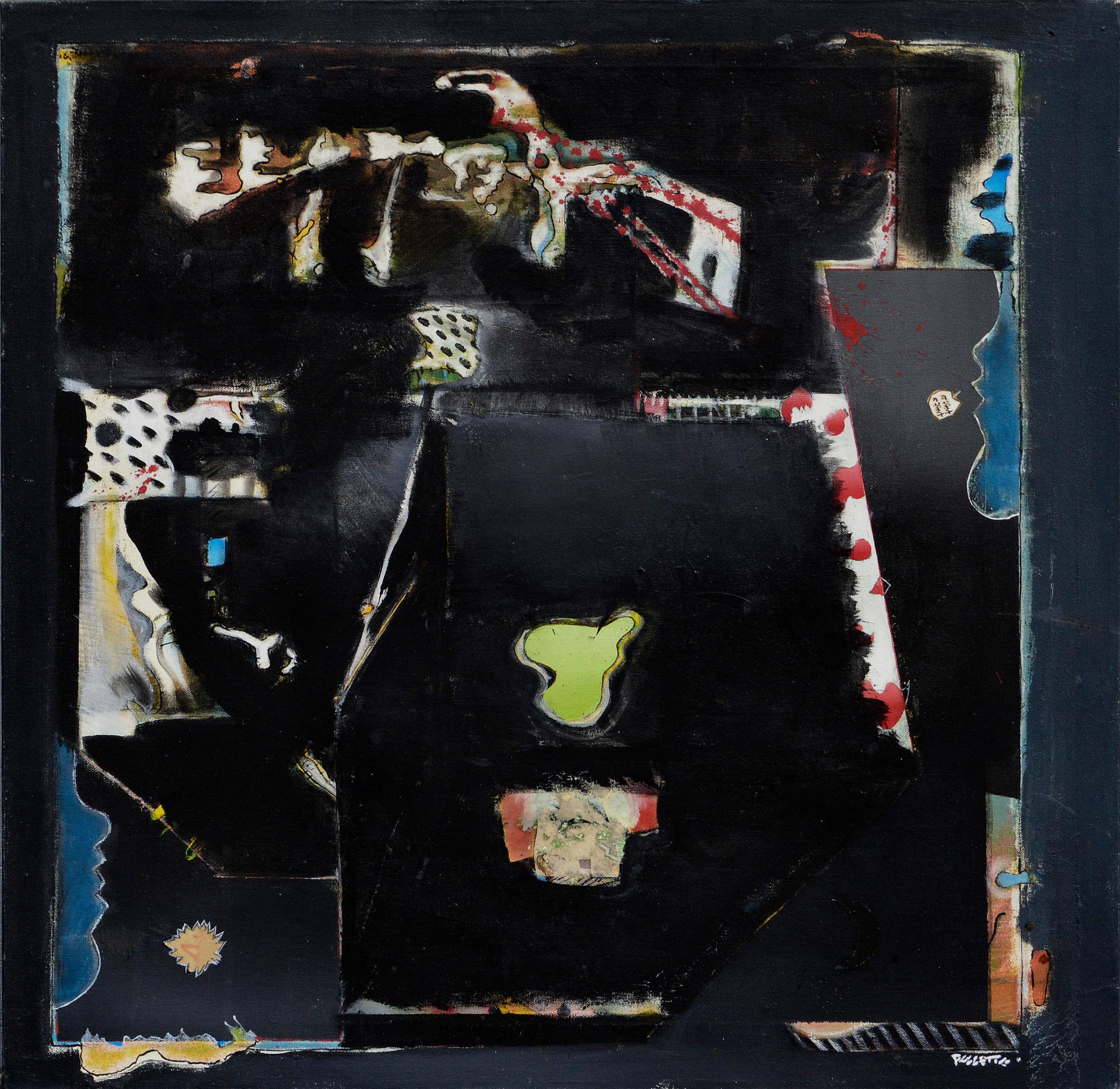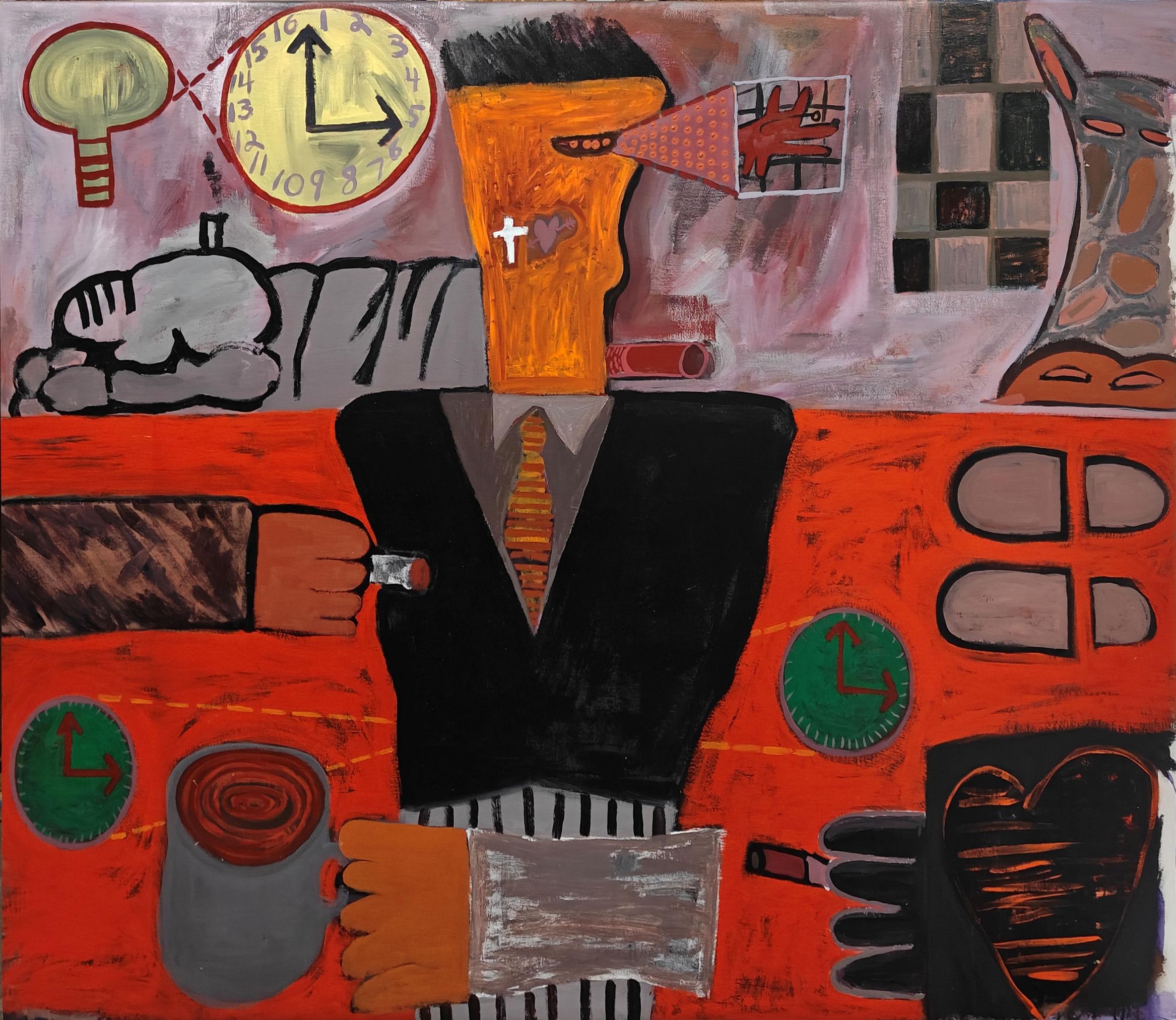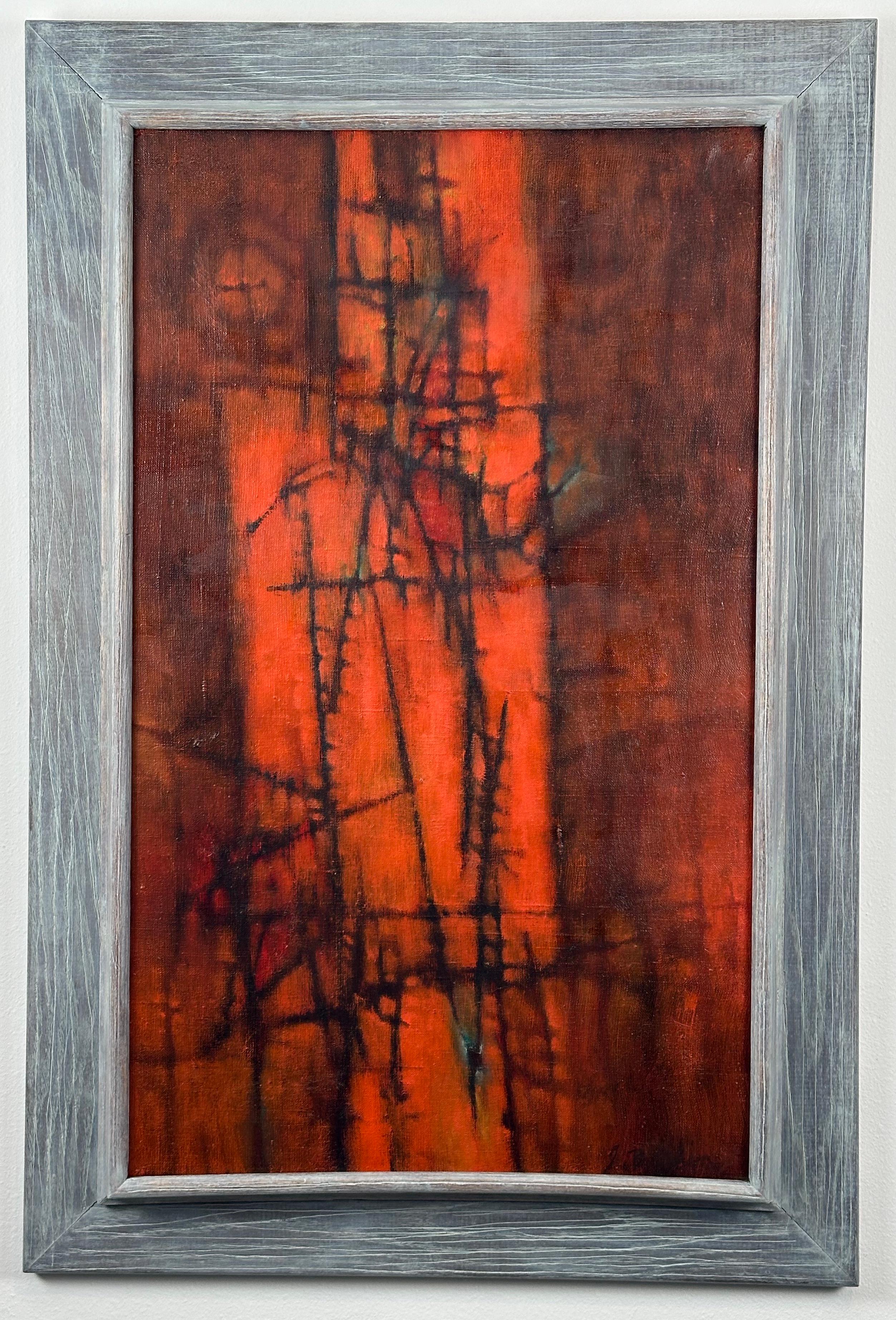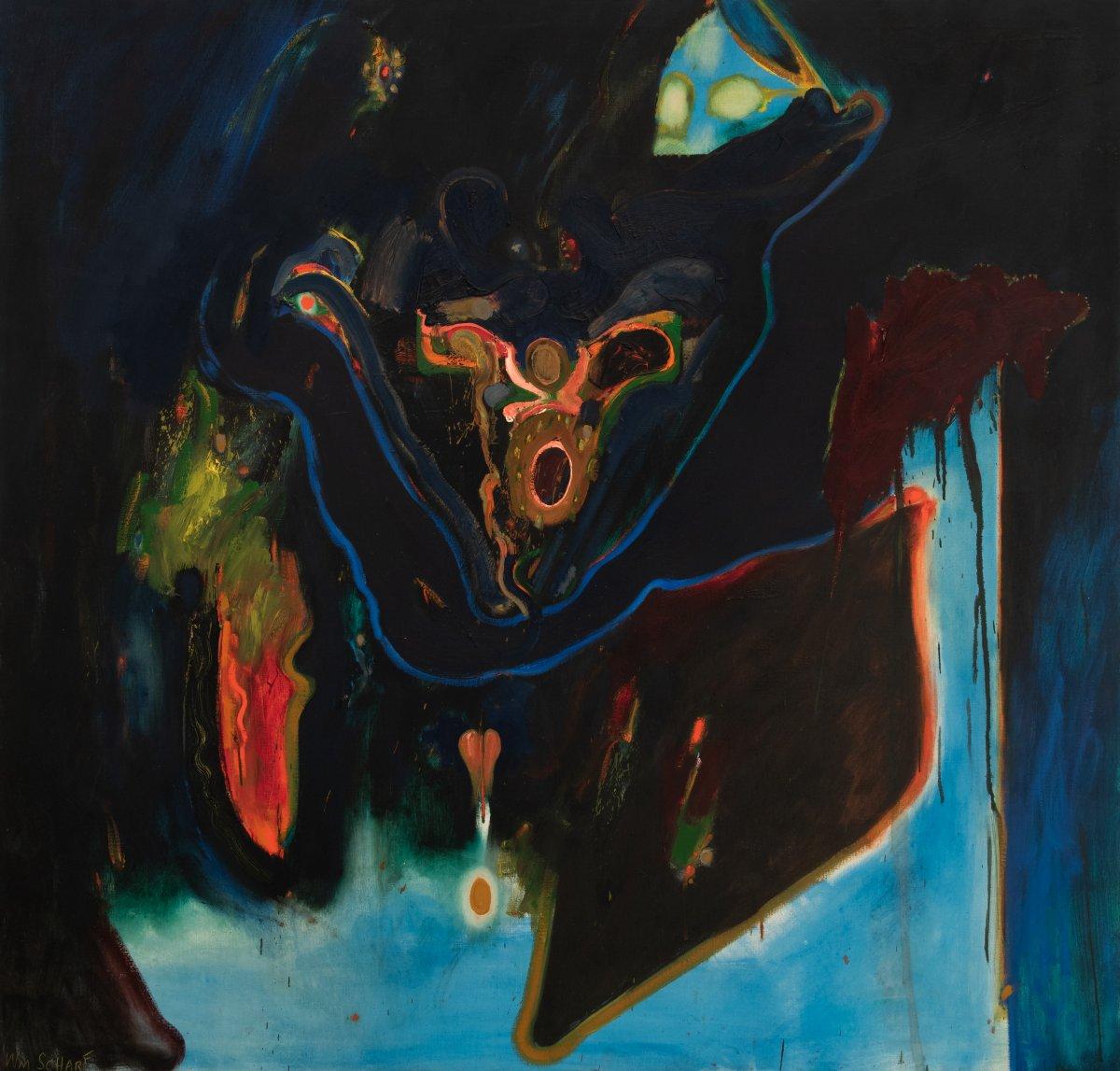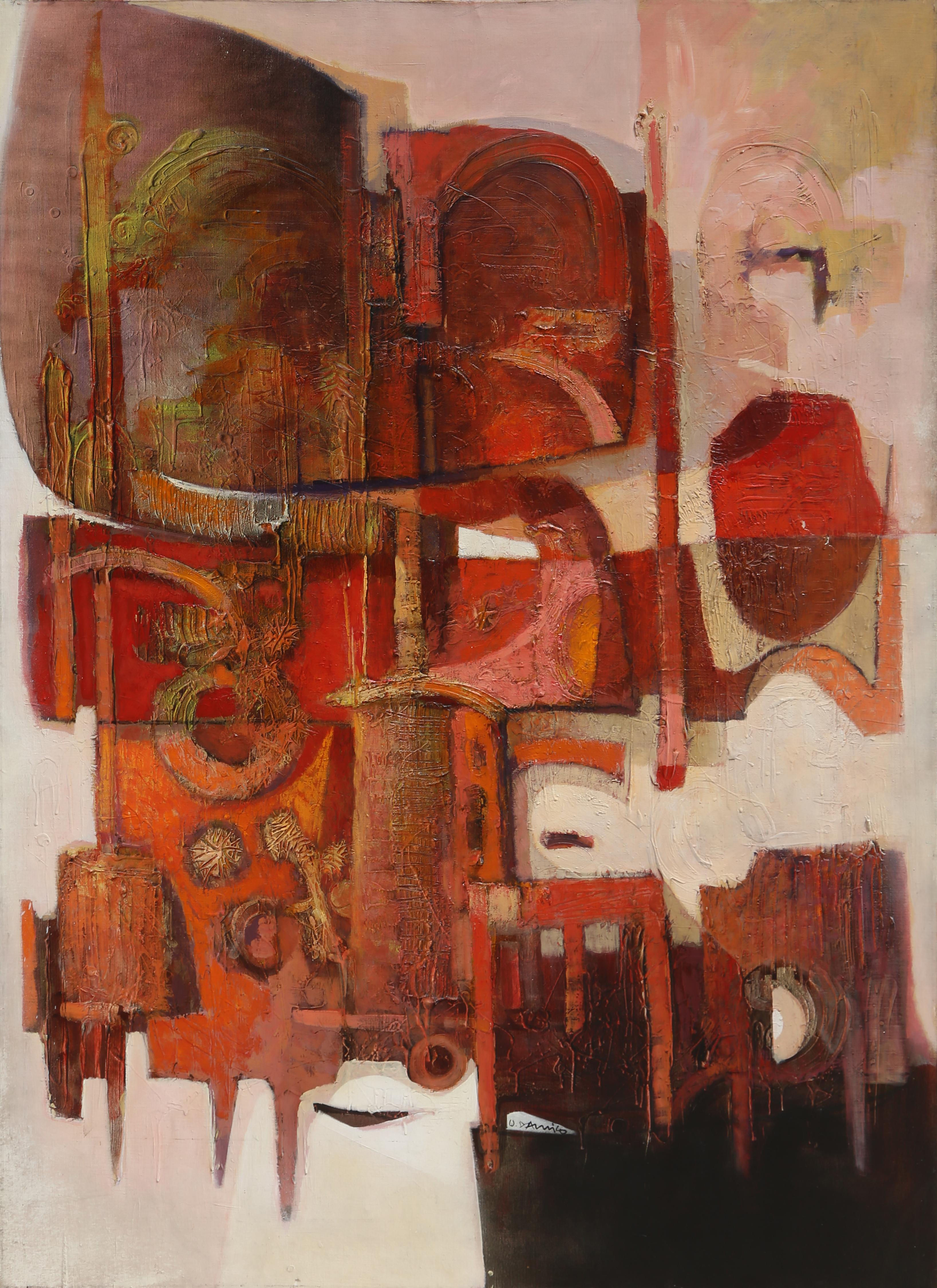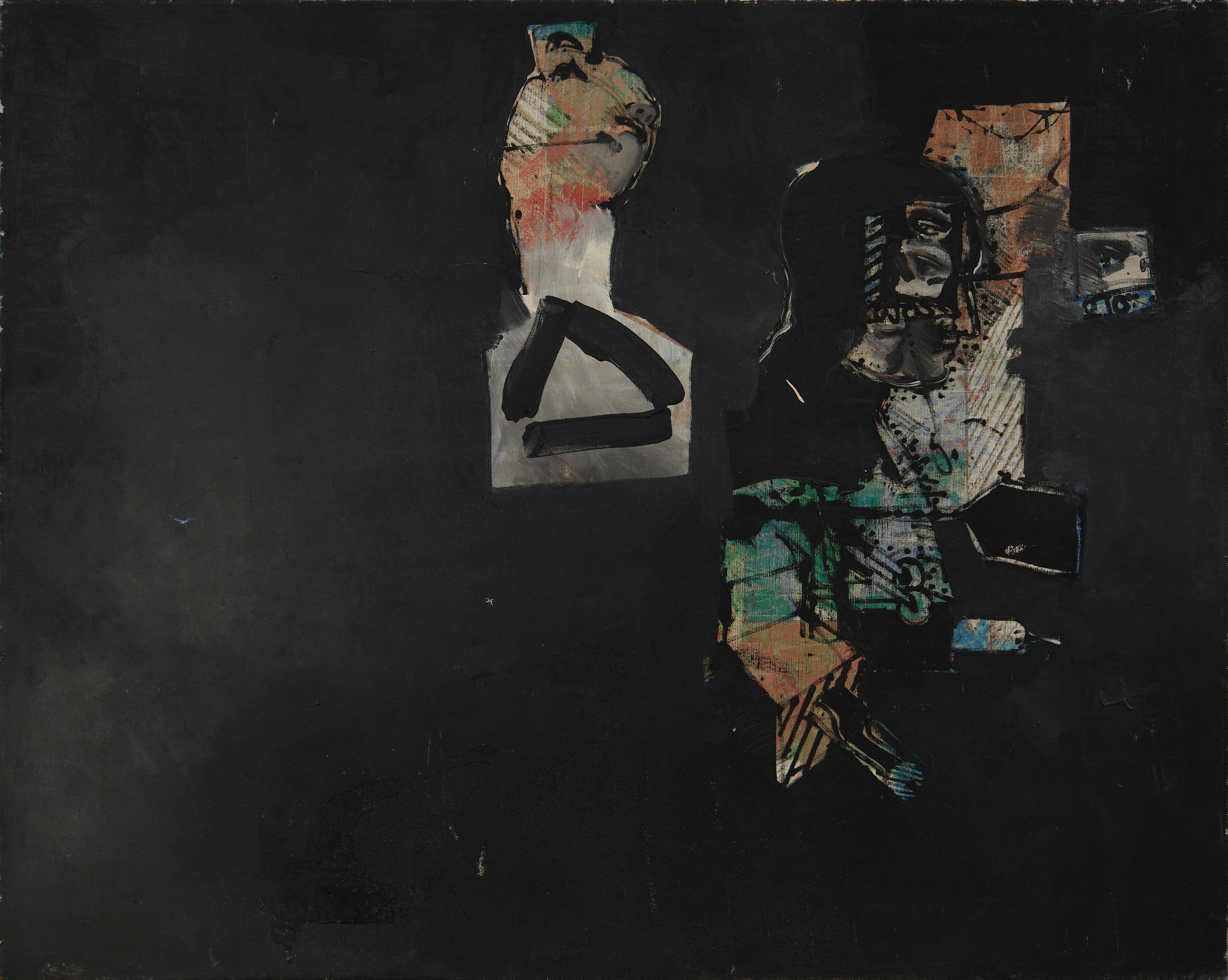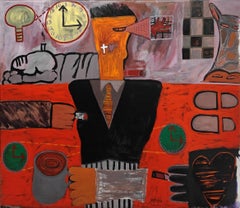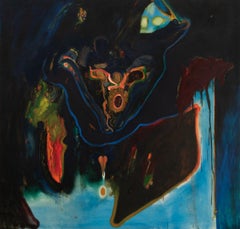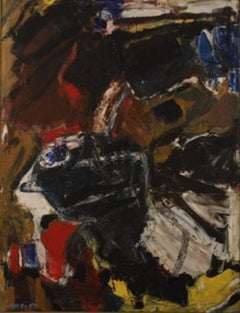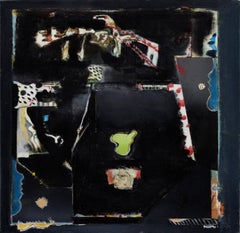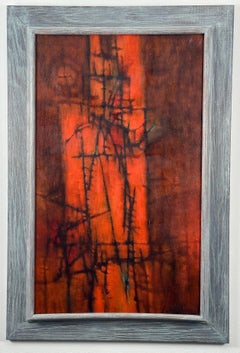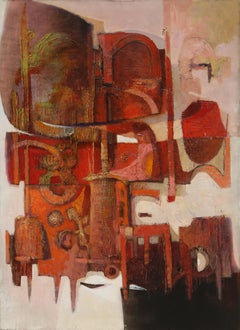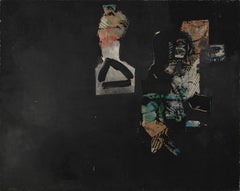Items Similar to "Untitled, " William Baziotes, Black Modern Abstract Expressionism, Surrealism
Want more images or videos?
Request additional images or videos from the seller
1 of 8
William Baziotes"Untitled, " William Baziotes, Black Modern Abstract Expressionism, Surrealismcirca 1935
circa 1935
$80,000
£61,330.15
€70,178.94
CA$113,058.02
A$122,889.60
CHF 65,784.78
MX$1,485,450.40
NOK 829,016.42
SEK 764,568.42
DKK 524,124.55
About the Item
William Baziotes (1912 - 1963)
Untitled, circa 1935-1940
Oil on board
14 x 19 3/4 inches
Illegible Inscription present to the verso
Provenance:
Previously from the estate of Constance and Harry Baziotes
Pennypacker-Andrews Auction Centre, Inc., September 25, 1995
Private Collection, New York
EBTH, August 28, 2019
Private Collection, New York
This work will be included in the forthcoming William Baziotes Catalogue Raisonné, under preparation by Michael Preble.
As a painter, William Baziotes regularly drew on Surrealist and primitive sources. The poetic quality of his work is rooted in his mastery of the technical aspects of painting, his ability to mine the cultures of the past, and, most importantly, his talent for marrying the cerebral and whimsical. Writings by Charles Baudelaire and the French Symbolist poets provided potent inspiration for Baziotes, who also yearned to express deep-seated emotions and states of mind.
Baziotes adopted the Surrealists' investment in fantasy and the principle of automatism as points of departure for his compositions. In 1942, Baziotes, his wife Ethel, Robert Motherwell, Jackson Pollock, and Lee Krasner began to meet regularly to play Surrealist games and to write poetry together. This spirit of openness and collaboration shaped Baziotes' artistic sensibilities and hastened the incorporation of Surrealist elements in his work. In order to balance the spontaneity of automatic painting, Baziotes also assimilated Synthetic Cubist techniques; he was familiar with the work of Joan Miró and Pablo Picasso.
Baziotes' understanding of Surrealism was highly personal—he drew inspiration from myriad sources and used many layers of translucent glaze to create psychically charged paintings that resonated with the memory of their creation. Although spiritual intensity suffuses the work, the iconography, usually biomorphic, is abstracted and evocative, never explicit. Baziotes explained this intentional ambiguity in 1959: "It is the mysterious that I love in my painting. It is the stillness and the silence. I want my picture to take effect very slowly, to obsess and to haunt."(1) Rarely literal, his titles are clues to the layers of symbolic and personal meaning.
Born and raised in Pittsburgh, Baziotes began his formal art training in 1933 at the National Academy of Design in New York City, where he studied through 1936 with Charles Curran, Ivan Olinsky, Gifford Beal, and Leon Kroll. After three years at the Academy, Baziotes started painting realistic landscapes and still lifes. While employed by the WPA Art Project in the late 1930s, he began to execute works in a more stylized manner and showed diminishing interest in rendering subjects with anatomical verity.
The 1940s brought close relationships with many artists in the emerging Abstract Expressionist group. Although Baziotes shared their interest in primitive art and automatism, his work consistently displayed stronger affinities with European surrealism. Baziotes met Chilean-born Surrealist Roberto Matta in May 1940, the same year he exhibited with the Surrealists in a group show organized for the New School. By 1941, Baziotes was actively experimenting with abstraction and Matta introduced him to Robert Motherwell. The following year Baziotes exhibited in the "First Papers of Surrealism" exhibition, along with artists including Motherwell and David Hare. Baziotes was honored with his first one-man show in New York in 1944 at Peggy Guggenheim's Art of This Century Gallery. His next solo showing was in 1946 at the Kootz Gallery, which represented Baziotes through 1958. In 1962, he was one of the celebrated artists included in Sydney Janis' important exhibition, Ten American Painters.
Baziotes, who was of Greek descent, often used the forms that appeared in the ancient sculpture he owned, and during the 1950s he studied Greek sculpture at the Metropolitan Museum of Art. Baziotes drew visual inspiration from a wide range of sources, including the rich colors of Persian miniatures and even the grotesque variations seen in specimens from the natural sciences.
In the latter part of his career, Baziotes taught extensively. He became a founding member of the school on Eighth Street in 1948 and in the years that followed, he taught at the Brooklyn Museum Art School, People's Art Center, the Museum of Modern Art, and Hunter College in New York.
- Creator:William Baziotes (1912-1963, American)
- Creation Year:circa 1935
- Dimensions:Height: 19.75 in (50.17 cm)Width: 25.75 in (65.41 cm)
- Medium:
- Movement & Style:
- Period:
- Condition:
- Gallery Location:New York, NY
- Reference Number:1stDibs: LU184129925032
About the Seller
5.0
Platinum Seller
Premium sellers with a 4.7+ rating and 24-hour response times
Established in 2022
1stDibs seller since 2022
132 sales on 1stDibs
Typical response time: <1 hour
- ShippingRetrieving quote...Shipping from: New York, NY
- Return Policy
More From This Seller
View All"Untitled" Lawrence Philp, Abstracted Surrealist Forms by Afro-American Artist
Located in New York, NY
Lawrence Philp
Untitled
Oil and acrylic on canvas
75 1/2 x 79 inches
Lawrence Philp, the son of Jamaican immigrants, studied at the Rhode Island School of Design and was included i...
Category
1970s Post-Modern Abstract Paintings
Materials
Canvas, Oil, Acrylic
"Untitled" William Scharf, Abstract Expressionist, New York School
By William Scharf
Located in New York, NY
William Scharf
Untitled, 1962
Signed lower left; signed and dated verso
Oil on canvas
48 x 50 inches
A visionary painter with ties to the avant-garde artistic community in New York at midcentury, William Scharf nevertheless defies art historical categorization. His abstracted compositions of organic and geometric formal elements recall the free associations of Surrealism and the all-over grandeur of Abstract Expressionism, and at the same time embody a very individual and immediately recognizable pictorial sense. Scharf combines virtuoso paint handling, vibrant color, and rich symbolic language in canvases that engage the viewer in a transcendent and emotional dialogue. This dialogue is accomplished in part through recurring symbols, which allude to hidden, mysterious narratives. Scharf plumbs the psychological wells of collective myths for symbolic content: the crown of thorns, the ladder, the fish, and the cross can be found throughout, functioning not, as one might expect, as religious symbols, but rather as a means through which to access a deeper, symbolic level of visual communication.
Born in 1927 in Media, Pennsylvania, an early friendship with renowned artist N.C. Wyeth encouraged Scharf’s artistic efforts from a very young age. After a time with the Army Air Corps in the mid-1940s, Scharf formalized his art studies at the Pennsylvania Academy of the Fine Arts under Franklin Watkins...
Category
1960s Abstract Abstract Paintings
Materials
Canvas, Oil
$19,600 Sale Price
20% Off
"Untitled" Steven Pace, Second Generation Abstract Expressionist Painting
By Stephen Pace
Located in New York, NY
Stephen Pace
Untitled, 58-06, 1958
Oil on canvas
54 x 41 inches
Born in Charleston, Missouri, Stephen Pace grew up in Indiana, where his parents operated a grocery store and then a...
Category
1950s Abstract Expressionist Abstract Paintings
Materials
Canvas, Oil
"Untitled, 56-21" Stephen Pace, Pulsating Forms, Abstract Expressionist Painting
By Stephen Pace
Located in New York, NY
Stephen Pace
Untitled, 56-21, 1956
Signed and dated lower right
Oil on canvas
22 x 30 inches
Born in Charleston, Missouri, Stephen Pace grew up in Indiana, where his parents operat...
Category
1950s Abstract Expressionist Abstract Paintings
Materials
Canvas, Oil
"El Innombrable" Fernando de Szyszlo, Red Mysticist Abstract Composition
By Fernando de Szyszlo
Located in New York, NY
Fernando de Szyszlo
El Innombrable, 1980
Titled inscribed dated verso: Orrentia 1980 "El Innombrable"
Signed lower bottom edge center "Szyszlo"
Oil on canvas
59 1/2 x 59 inches
Fernando de Szyszlo was a Peruvian painter...
Category
1980s Surrealist Abstract Paintings
Materials
Canvas, Oil
"Wildness Lies in Wait" William Littlefield, Abstract Expressionism
Located in New York, NY
William Littlefield
Wildness Lies in Wait, 1956
Signed and dated lower left; signed, dated and titled on the reverse
Oil on canvas
48 x 25 inches
William Horace Littlefield was bor...
Category
1950s Abstract Expressionist Abstract Paintings
Materials
Canvas, Oil
You May Also Like
Abstract Expressionist Composition on Black
By Ross H. Pollette
Located in Soquel, CA
Colorful and dynamic abstract composition by Ross H. Pollette, who also paints under the pseudonyms 'Max West' (American, b. 1948). Pollette has used oil, in...
Category
1980s Abstract Expressionist Abstract Paintings
Materials
Canvas, Ink, Mixed Media, Oil
$920 Sale Price
20% Off
Untitled (Abstract Expressionist Painting)
By Jesse Redwin Bardin
Located in Wilton Manors, FL
Jesse Redwin Bardin (1923-1997). Untitled, ca. 1960.
Oil on canvas, 18 x 31 inches; 21.5 x 36.5 inches framed. Signed lower right.
Provenance: Private collection, Philadelphia; F...
Category
Mid-20th Century Abstract Expressionist Abstract Paintings
Materials
Canvas, Oil
Large Abstract Expressionist painting by Oskar D'Amico
By Oskar D'Amico
Located in Long Island City, NY
Artist: Oskar Maria D'Amico, Italian (1923 - 2003)
Title: Untitled
Year: 1967
Medium: Oil on Canvas, signed
Size: 66 x 48 in. (167.64 x 121.92 cm)
Category
1960s Abstract Expressionist Abstract Paintings
Materials
Oil
Large Black Figural Abstract 1960s Painting, Mexican American Artist
By Miguel Conde
Located in Beachwood, OH
Miguel Condé (Mexican/American, b. 1939)
Untitled, 1968-9
Oil on canvas
Signed and dated verso
44.25 x 55 inches
Miguel Condé is a Mexican figurative painter, draughtsman, and print...
Category
1960s Abstract Abstract Paintings
Materials
Oil
'Monogrammes'. French Mid-Century Abstract Expressionist. Oil on Canvas.
Located in Cotignac, FR
A mid-century abstract expressionist oil on canvas presented in a plain wooden frame. The work is titled and there are initials 'G.O.' (artist?) on a label to the rear stretcher as w...
Category
Mid-20th Century Contemporary Abstract Paintings
Materials
Canvas, Oil
Dynamic Mid-Century Abstract Expressionist Piece
Located in Soquel, CA
Dynamic Mid-Century Abstract Expressionist Piece by Andres R. Montani (Uruguayan b. 1918 d. 2000)
Bold and beautiful 1960s abstract expressionist oil painting. This painting is cons...
Category
1960s Post-Modern Abstract Paintings
Materials
Oil
More Ways To Browse
Vintage Constance
Winter Posters
Bahamas Photography
Japanese Traditional Art
Metropolitan Gallery
Theatre Costumes
Used Building Materials
Vintage Clown Art
19th Century Oil Painting Boy
Antique Painting Boy
Campbells Soup
Contemporary Outdoor Sculptures
In Despair
Kate Moss Art
French Artist Poster
Pharrell Williams
Serigraph Prints Signed
Bis Vintage
